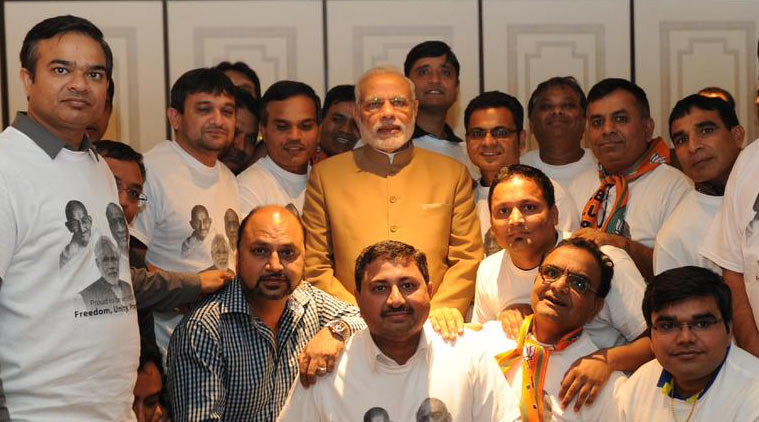Opinion Reverse swing: Modi in the land of the free (market)
Indian-Americans are in a frenzy yet again over yet another visit to the US by Narendra Modi.

 PM Modi met members of the Indian community in New York. (Source: Twitter/@PMOIndia)
PM Modi met members of the Indian community in New York. (Source: Twitter/@PMOIndia)
The Prime Minister, perhaps as payback for the denial of an American visa when he was a mere provincial satrap, is on his second official trip here in a piquantly short span. When you add to this the State visit to India by Obama, you have an almighty dollop of America in the first 17 months of the Modi government. And to think we were Soviet sidekicks not so long ago!
There’s a reason for all this. India and America are the great unresolved alliance of the 21st century, having been at miserable odds with each other for decades after Independence. The hype in the relationship still outweighs the substance, but there are enough signs — on both sides — that there’s a will to go from second to third base over the next five years. A President Hillary will only accelerate the congress. In the Age of Xi, and of a scary, hard-ass China, India wants America to be globally assertive again. A wishy-washy Washington has made everyone jittery, New Delhi included.
What would it take to get the two countries even closer? To be honest, India needs the US more than the US needs India, so India will have to make many more adjustments than the US to its mindset and policies.
Unlike in India, where bureaucrats and ministers can strong-arm the private sector to a still-unlovely degree, the US is a free market — which means that private businesses answer to their shareholders, not to the government. Which is why Jeff Immelt of General Electric has made it clear that his shop cannot build nuclear reactors in India if Indian liability laws remain as they are.
Does the White House want reactors built? You bet. Has it tried to persuade GE to Make in India? Almost certainly. And yet, Immelt — however acute his understanding of diplomatic imperatives — will not budge. I don’t blame him. The bottom line pays his wages.
No amount of wooing the Indian diaspora in the US will help consummate the marriage until India gets its own house in order.
Modi believes — and with good reason — that Indian-Americans are a formidable asset in India’s external relations, particularly in pressing “India’s case” (whatever that may be) on American politicians at every level. Politics in the US is retail, and a New Jersey state senator can be just as effective in India’s cause as an editorial in The New York Times (which, come to think of it, is unlikely to be helpful at all).
But pro-India advocacy in America will only go as far as the realities of the Indian market permit. And that won’t be a mighty distance so long as India continues to rank 142nd out of 189 countries for the ease of doing business. (That’s higher than India’s 155th-place FIFA ranking, which means that we’re fractionally better at curbing red tape than we are at football. #DepartmentOfSmallMercies)
And so, instead of scouring the globe in search of support for India’s quixotic bid for permanent membership of the UN Security Council, and instead of grandstanding in Silicon Valley, our PM would find much greater reward if he were to deliver the economic reform that we had expected from him. Can he start by getting our ease-of-business ranking down, at least, to double figures? Unlike in cricket, 99 is so much better than 142.
Once Modi does that, he should visit the US — yet again.
The writer is the Virginia Hobs Carpenter Fellow at Stanford University’s Hoover Institution.





